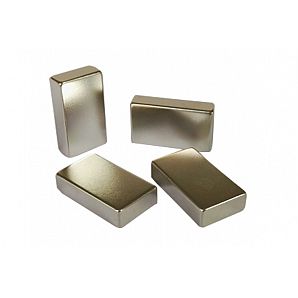Ferrite magnet is a kind of permanent magnet which is mainly made of SrO, Bao and Fe2O3. Compared with other permanent magnets, ferrite magnets are hard and brittle with low magnetic energy. However, it is not easy to demagnetize and corrode, the production process is simple and the price is low. Therefore, ferrite magnets have high output in the whole magnet industry and are widely used in industrial production. Then the magnet manufacturer introduces the characteristics and logistics performance of ferrite magnet?
It is produced by powder metallurgy with low remanence and low recovery permeability. Due to its high coercivity and strong demagnetization resistance, it is especially suitable for the magnetic circuit structure under dynamic working conditions. The material is hard and brittle, and can be used for diamond tool cutting. The main raw material is oxide, so it is not easy to corrode. Operating temperature: - 40 ℃ to + 200 ℃.
Ferrite magnets can be divided into anisotropy (anisotropy) and isotropy (isotropy). The results show that the magnetic properties of isotropic sintered ferrite are weak, but they can be magnetized in different directions of the magnet; the anisotropic sintered ferrite permanent magnet has strong magnetic properties, but it can only be magnetized along the pre Brown direction of the magnet.
In the actual production of ferrite magnets, sometimes the raw materials with good chemical composition may not be able to obtain ferrite magnets with good performance and microstructure. The reason is the influence of physical properties. The physical properties of iron oxide include average particle size APS, specific surface area SSA and bulk density BD. The APS value of Mn Zn ferrite powder has a great influence on the APS value of ferrite powder, because iron oxide accounts for about 70% in the formula of Mn Zn ferrite magnet.
Generally speaking, the APS value of iron oxide is small, and the APS value of ferrite magnet powder is also small, which is conducive to accelerating the speed of chemical reaction. However, the APS value should not be too small considering that the powder particles are too fine, which is not conducive to the subsequent pressing and sintering crystallization. Obviously, when the APS value of iron oxide is too high, the diffusion reaction of spinel phase can only be carried out when the dangerous ship is pre fired, and the grain growth process can not be further carried out because of the large particle size. This will inevitably lead to the increase of activation energy during sintering, which is not conducive to solid-state reaction.








